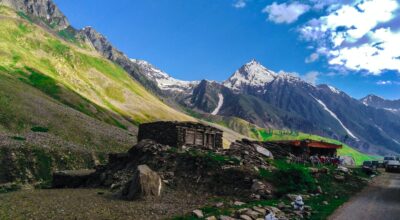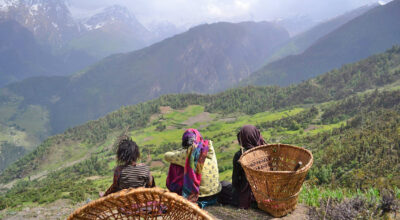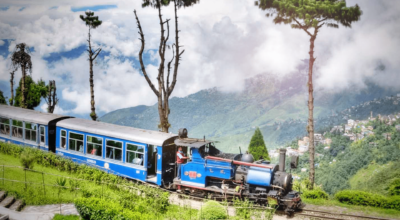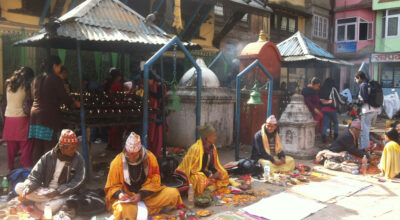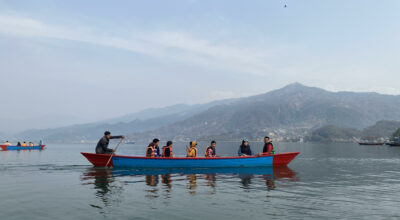Indra Jatra :History Of Human Conquest Over Gods

Indrajatra
Indra Jatra is traditionally worshiped in Kathmandu Valley, Bhaktapur, Dhulikhel, Lalitpur and Dolakha. In Nepali language, this procession is called Yenya Punhi. This procession which lasts for 8 days is completed by various dance songs and rath yatras. In Indra jatra, Hanumandhoka Durbar area is celebrated more grandly than Dashain Tihar.
The lingo flag mentioned in epics like Debi Purana, Vishnu Dharmottar Purana, Brihatsamhita, Harivansh Purana, Bhavishya Purana and Ramayana Mahabharata is found in Indra jatra.
Legend of Indrajatra

According to the legend of this Indra jatra, in ancient times, Indra’s mother Vasundhara found a flower near the Kheri Durbar area while searching for flowers as there was a lack of Parijat flowers to complete her fast. And later, when we found out that it was Indra, we celebrated Indra jatra with him. From that day onwards, they started worshiping Indra. Vasundhara came looking for her son. But when she saw that he was worshiping Indra, she told him that the rice would ripen in time. From then on, it started to get foggy, which caused the crops to sprout.
According to another source, during the war between the gods and the demons, Kheri made Indra the leader and all the gods made a flag for Indra’s victory and duly worshiped Indra. The flag was called Indradhwaja because it was held by Indra and it was because of that flag that Indra won. Its happiness was celebrated in 3 people everywhere.
When the king of the earth, Uparichar Vasu, found out about this news, he worshiped Indra and asked for a rainbow flag as a gift.Indra fulfilled his wish. Later the war was won and the custom of worshiping the rainbow every year was established which is still a tradition.The glory of Indra is found to have increased in Nepal from the 5th to the 7th century when the Indrajatra originally originated.
But even before this, Indra jatra was celebrated. At that time, in Indra jatra, a deity called Aju was worshiped without worshiping Indra. The main reason for worshiping him was to pour water. But Indra was not mentioned.Later, those who understand Sanskrit say that Indra is the god of water, so the importance of Indra has been added to this procession. Emphasizing this, according to the famous historian Gautam Bajracharya, neither Indra nor Bhairav was present in the ancient pilgrimage.

The procession is believed to have been started in Kathmandu by King Gunakamdev in the 10th century and the Kumari Yatra is believed to have started in the mid-eighteenth century.Indrajatra is celebrated not only in Kathmandu but also in the surrounding districts. Similarly, it is customary to have a short penis at the crossroads of Bhaktapur. Which is called Yambo: dyo in the local language and is considered to be the symbol of Indra’s son Jayantha.
This journey typically lasts for 8 days. According to Newar tradition, Bhadra Shukla is celebrated for eight days from the day of Paksha. The main object of this procession is Lingo which is called Yahsin in Nepali language. The lingo is placed in front of the Kalbhairav of the Basantapur Durbar according to the Tantric method. The linga is decorated with various inscribed leaves and is worshiped with an idol of an elephant seated in a golden jalap. Looking at its history, it is believed to have been run by King Pratap Singh Shah.
On the same day, the temple of Shweta Bhairav in the Durbar area of Hanumandhoka is opened to the public. Three days after the erection of the lingo, a chariot of Kumari, Ganesh and Akash Bhairav travels to the Basantapur Durbar area. For eight days, there has been a tradition of performing Pulukisi dance as a symbol of Akash Bhairav of Halchowk, Mahakali dance of Bhaktapur, Majipa Lakhe dance of Majipat, Dashavatar and Indra’s vehicle Airavat. During this special period, Vishnu’s Dashavatar is also shown in the Trilokya Narayan temple where the virgin is buried.

Similarly, at Indradaha in Dahchok, about 7 km west of Kathmandu, it is customary to stay awake all night. They donate lamps and worship the idol of Trivikram at Tilganga on Vamana Dwadashi the next day.The idol was erected by Mandev in 526 BS to pay homage to his mother Rajmata Rajyavati. Due to this, this journey seems to have started in the Lichhavi period. The same journey is also mentioned in the Gopal Raj genealogy. In which only Jatra is mentioned and no deity is mentioned.Indra Jatra
From this day onwards, it is customary to light a lamp in the name of Indra on the last day of Indrajatra.In terms of culture, Indrajatra is the main festival celebrated by the Newar community in the Kathmandu Valley. Indrajatra is celebrated every year on the day of Bhadra Chartudashi. This festival is celebrated in Kathmandu, Lalitpur, Dolakha, Bhaktapur and Dhulikhel.
Although it looks traditional, it has been improved and managed over time. At its center is the worship and remembrance of Indra, the god of rain and contemporaries. On Bhadra Shukla Dwadashi, the festival begins when a lingo with a rainbow flag is raised in front of Hanumandhoka. After that, dancing, rath yatra and worship of deities continue for eight consecutive days.
Myth About Indra & Indrajatra

Lingo, which is the main deed used to celebrate the festival, is called Indradhvajotthan. After the lingo is performed in front of the huge idol of Kalbhairav according to the religious method, the bustle of Indrajatra begins. In the Newari language, the lingo is called Yorsi. The celebration begins with the image of Indra riding on an elephant under the lingo and the mangal tune of the soldier’s band baja and panche baja. According to the history, the custom of flying the rainbow flag in Indrajatra was practiced by King Pratap Singh Shah.Indra jatra
This procession uses the now disappearing Tantric method. Also, in this festival, a chariot procession of Kumari, Ganesh and Bhairav as living goddesses is done in Hanuman Dhoka and other areas. Fairs are held at religious places in the valley for eight days. Surprisingly, Indrajatra is worshiped with joy in various places in the local area. In every festival, the deity is worshiped with reverence from the beginning.
But in Indrajatra, Indra is tied with a rope on a bed made of four lions by making a high double between Marusattal and Sinlapansattah in Marutol of Kathmandu. It shows the victory of man over God.
According to culturologists, Devraj Indra, who had come to fetch flowers and crabs from Parijat for the brat of mother Basundhara, went to pick flowers and crabs in Karesabari without asking anyone. Later, knowing that he is Indra, worship is done and the procession itself is celebrated.
Here man seems to have fulfilled the religion of man.In some places, the idol of Indra is tied with a rope and made into a double double. At midnight on the occasion of Indrajatra, the idol of Akash Bhairav, the head of Kiranti king Yalambar in Indrachowk, is worshiped outside the temple with a variety of flowers. The tradition of tying Devaraja Indra on the one hand and worshiping the human king Elambar on the other clearly shows the victory of man over the deity.

In the tune of Dhimebaja, offerings are made to the general public by pouring a stream of liquor from the pipe connected to Bhairav’s mouth. This shows that instead of Somaras, the favorite drink of the king of the gods, Indra, he ate and drank alcohol taken by human beings and said, “We are not inferior to human beings.”Even if human beings conquer Indra, it means that the deity will be more powerful than the human being.Indra Jatra.
In some Puranas, it is also mentioned that Indra was possessed by demons and not by humans. It is mentioned that Indra, who went to pick the flowers of Parijat, was possessed by a demon. It is clear that the Puranas are a time of religious and hymns based on fiction.According to the Puranas, rainbow flags were flown at temples, houses, crossroads, chariots of war and during festivals with the wish of victory in the heavens and the earth.
In the description, it is said that after Devraj Indra provided the rainbow flag to King Uparichar Vasu, the rainbow flag was hoisted for happiness, peace and prosperity in the kingdom.It should be remembered that in the context of war and victory, in the history of Nepal, B.C. On the day of Indra Jatra in 1825, Prithvi Narayan Shah defeated the then Malla king Jayaprakash Malla and conquered Kathmandu.
FAQ’S
How is Indra Jatra celebrated?
What does Indra Jatra indicate?
Who started Lakhe Jatra in Nepal?

